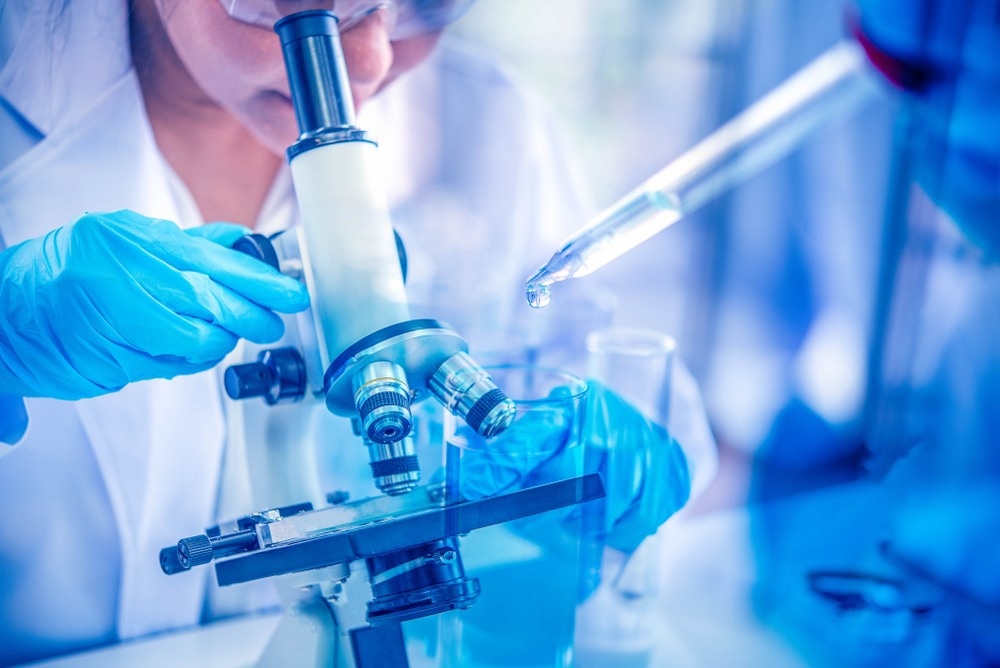Cancer is a complex disorder with diverse manifestations and pathologies at the molecular level. Due to its deadly nature, widespread incidence, and prevalence, there is an intense scientific effort to understand cancer mechanisms and discover possible therapies. With the advent of molecular biology, cellular biology, and pathological techniques, there is a much deeper understanding of the disease compared to a few decades ago.

Image Credit: Rachaphak/Shutterstock.com
Nixon’s “War on Cancer”
In 1971, President Nixon declared a “War on Cancer,” and since then, our understanding of the disease and the development of potential treatments have advanced significantly. Since 1971, the United States invested over $200 billion in cancer research, including funding from public, private, and philanthropic sources.
Incidence, survival, and cure rates
Although cancer incidence rates have risen in most countries, the advent of improved therapies survival has led to prolonged survival, increased cure rates, and a dramatic decrease in cancer-related deaths over the last two decades. In the United States, a five percent decrease in the age-adjusted cancer death rate was observed between 1950 and 2005.
Research areas
Molecular basis of cancers
Cancer is a multifactorial disease primarily caused by uncontrolled cell growth and proliferation. This uncontrolled growth is driven by genetic and epigenetic alterations that disrupt the normal regulation of cell division, differentiation, and death. The molecular basis of cancer can be broadly divided into two categories:
- Genetic alterations: These are changes in the DNA sequence of a cell's genome. Genetic alterations can be inherited from parents or acquired during a person's lifetime through exposure to carcinogens or errors in DNA replication.
- Epigenetic alterations: These are changes in the mode in which genes are expressed without altering the underlying DNA sequence. Epigenetic alterations can be associated with environmental factors, lifestyle choices, or random events. Epigenetic alterations, particularly those affecting chromatin structure, are implicated in cancer development. Recent research has led to the development of "epidrugs" that target various chromatin-modifying enzymes and associated proteins, opening up promising avenues for novel cancer therapies.
Both genetic and epigenetic alterations can contribute to the development of cancer. The most important genetic factors and molecular mechanisms involved in cancer include:
- Oncogenes are capable of promoting cell growth and proliferation in normal and senescent cells. When oncogenes are mutated or overexpressed, they can drive uncontrolled cell growth and contribute to cancer development.
- Tumor suppressor genes that suppress cell growth and division. When tumor suppressor genes are inactivated or lost, they can no longer control cell growth, leading to cancer development.
- DNA repair genes, which are responsible for fixing DNA damage. When DNA repair genes are mutated or defective, DNA damage can accumulate, leading to mutations in oncogenes and tumor suppressor genes.
- Epigenetic changes, including DNA methylation and chromatin modifications, can alter gene expression in those genes involved in cell growth, differentiation, and death. Epigenetic changes can also silence tumor suppressor genes or activate oncogenes.
Cancer prevention and early detection
Cancer research encompasses preventing, treating, and promoting awareness about adopting healthier lifestyle choices and the importance of early cancer detection. Cancer research aims to improve detection rates, increase the likelihood of therapeutic success, and enhance survival outcomes. Additionally, research investigates the potential of various foods and supplements in cancer prevention. Moreover, researchers are developing more effective methods of providing emotional support to individuals coping with cancer.
The strategies for preventing cancer and associated early-stage detection approaches involve a combination of public health initiatives, individual lifestyle modifications, and advancements in screening and diagnostic technologies.
- Lifestyle Modifications:
- Diet and Nutrition: Promoting a healthy diet rich in fruits, vegetables, and whole grains while limiting processed foods, red meat, and excessive alcohol consumption can lower cancer risk.
- Physical Activity: Regular physical activity has been shown to reduce the risk of several types of cancer, including colon, breast, and endometrial cancer.
- Weight Management: Maintaining a healthy weight can lower the risk of several obesity-related cancers, such as endometrial, breast, and colon cancer.
- Screening and Early Detection:
- Establishing Screening Guidelines: Evidence-based screening guidelines for different types of cancer, tailored to age, gender, and risk factors, can facilitate early detection and timely intervention.
References
- https://www.cancerresearchuk.org/
- http://theconversation.edu.au/its-time-to-adjust-our-cancer-research-priorities-8095
- http://ccr.cancer.gov/
- http://cancerres.aacrjournals.org/
- http://mcr.aacrjournals.org/
- http://clincancerres.aacrjournals.org/
- Abdullah, Mardiaty Iryani, et al. "Papillary thyroid cancer: genetic alterations and molecular biomarker investigations." International journal of medical sciences 16.3 (2019): 450.
- Di Costanzo, Antonella, et al. "Epigenetic drugs against cancer: an evolving landscape." Archives of toxicology 88 (2014): 1651-1668.
- Locke, Warwick J., et al. "DNA methylation cancer biomarkers: translation to the clinic." Frontiers in genetics 10 (2019): 1150.
- Rock, Cheryl L., et al. "American Cancer Society guideline for diet and physical activity for cancer prevention." CA: a cancer journal for clinicians 70.4 (2020): 245-271.
- Seplyarskiy, Vladimir B., et al. "Error-prone bypass of DNA lesions during lagging-strand replication is a common source of germline and cancer mutations." Nature genetics 51.1 (2019): 36-41.
- Zhang, Yan-Bo, et al. "Combined lifestyle factors, incident cancer, and cancer mortality: a systematic review and meta-analysis of prospective cohort studies." British journal of cancer 122.7 (2020): 1085-1093.
Further Reading